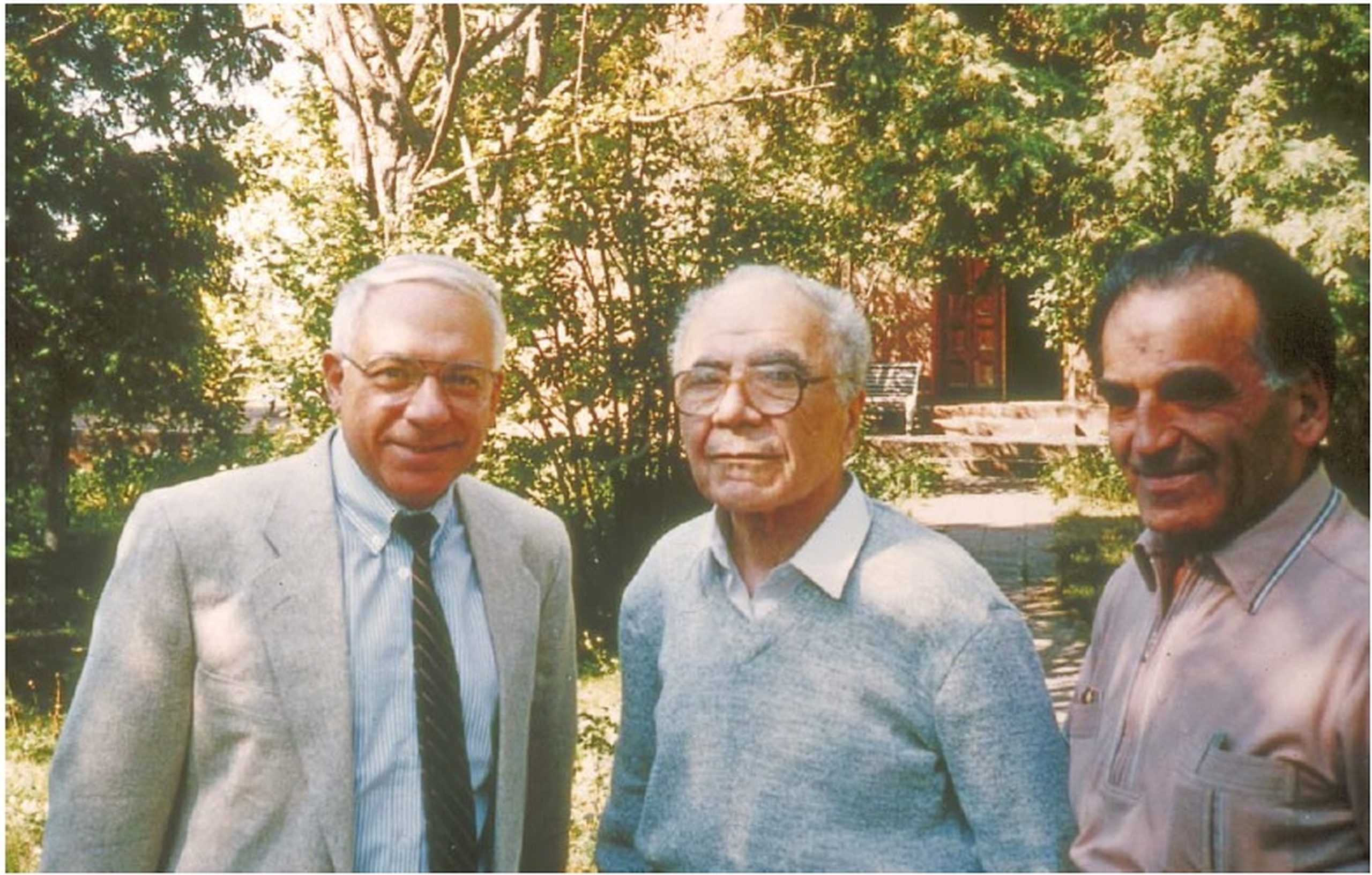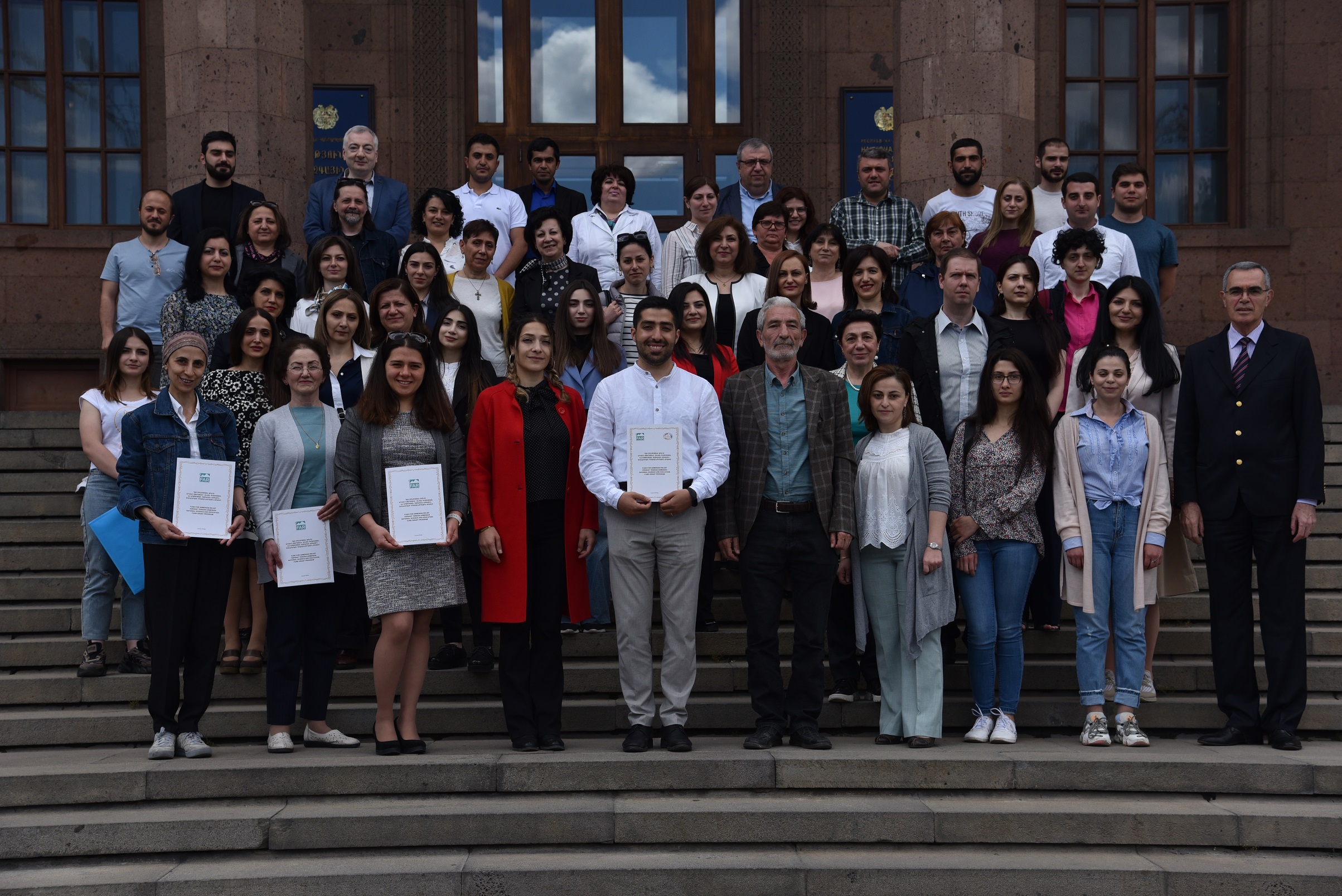“Of all the endeavors in Armenia, ANSEF is the top shining star,” stated Dr. Tavit Najarian. The Armenian National Science and Education Fund (ANSEF) started 22 years ago with support from the Fund for Armenian Relief (FAR).
This project was initiated by Drs. Najarian, Gregory Adamian, Mihran Agbabian, Aram Chobanian, Garabed Eknoyan, Vartan Gregorian, Anahid Kazanjian-Longobardo, Edgar Housepian, Yervant Terzian, Yervant Zorian and others.

“ANSEF has played an important role in maintaining Armenia’s tradition of excellence in the sciences by encouraging researchers to continue their groundbreaking work in Armenia,” Dr. Terzian stated. “Since its beginning in 2000, ANSEF has yielded impressive results. These world class scientists and scholars need our support. A strong research environment attracts the global attention that leads to investments, economic growth and independence.”
“Of course, Professor Terzian, the world renowned astrophysicist, was the driving force behind it,” said Garnik Nanagoulian, FAR’s executive director. “The visionary initiative of these luminaries is still advancing today, 22 years after it was founded, providing tremendous support to Armenia’s fundamental science,” he added. Since then, the project has accomplished incredible advances in helping to stop the “brain drain” of top scientific researchers and instructors from Armenia and bringing international recognition to Armenia, its extraordinary science and research programs and its talented individuals. Today, “ANSEF is a top supporter of the tradition of excellence in the sciences in Armenia,” Nanagoulian emphasized.
Dr. Artur Ishkanyan, a prominent physicist and the academician-secretary of the National Academy of Sciences of Armenia, related that ANSEF is “one of the unique cultural structures created by the Diaspora. It first introduced a new rhythm and way of thinking into our scientific reality that was in line with the highest standards of international scientific practice such as the Blind Peer Review, the standards for online submission and application. The level of highly qualified scientists-reviewers was assured.” All these, Dr. Ishkanyan continued, “were essential for the scientific community of Armenia. Moreover, ANSEF’s special attention given to young scientists contributed to the influx of young people into science, and alleviated the gap created by the lack of middle-aged scientists in science.”

One of these ANSEF grant beneficiaries shared the extraordinary benefits that resulted. Dr. Victor Vardanyan wanted to understand the intrinsic causes of child epilepsy. This had interested him since he had taken his PhD studies in molecular neuroscience at the University of Hamburg, Germany in the early 2000s. Now a 2022 ANSEF grant recipient, he and his research team are hard at work to find an answer. “Our research focuses on the terrible neuro-developmental disorders that cause devastating illnesses which affect the cognitive and motor functions of patients, especially children who suffer from epilepsy, developmental delays, intellectual disabilities, as well as behavioral and language problems,” said Dr. Vardanyan. Through the team’s genetic research, he believes progress can be achieved.
Dr. Chobanian, an ANSEF founder, was President Emeritus of Boston University from 2003-2005 and is a world-renowned cardiologist and formerly Dean of Boston University’s School of Medicine. He was the first recipient of the Lifetime Achievement Award in hypertension by the American Heart Association and served as director of the Hypertension Specialized Center of Research funded by the National Institute of Health from 1975 to 1995. He went to Armenia in 1991 and 1992 to see the clinical condition of the hospitals. “There were a lot of medical casualties from the first Karabakh war. We needed to help the scientists, but there were no graduate students, and there was no money, so the critical issue became the raising of funds. Also other groups needed money due to the 1988 catastrophic earthquake and the devastation in Artsakh.”
The ANSEF pioneers created the program in 2000 with five research grants. “We wanted the grant proposals peer reviewed, an important step,” said Dr. Chobanian. “Committee members reviewed the grant proposals, judging on the basis of quality. This system was accepted by prominent scientists. We gradually became known, and the grants increased. We were just giving seed money for these first grant recipients to get on their feet, and to also get money from other sources. During the early years of ANSEF, the grants increased, reaching 100 to 150.” Medical and scientific research “has not been a priority of independent Armenia,” declared Dr. Chobanian who was elected as a foreign member of the European Academy of Sciences and the National Academy of Sciences in Armenia. “ANSEF has to be broadened by planting and germinating seeds. We need a long-term concept in science and education in Armenia. And we need more funding,” he declared.
Dr. Vatche Sahakyan, who received his PhD in theoretical physics, including cosmology and the fundamental laws of nature from the University of Chicago, was born in Beirut, Lebanon and now lives in Los Angeles. He’s been a professor at Harvey Mudd College for 19 years. In the last 22 years, ANSEF has received 200 to 300 research proposals annually, he related. “We have reviewed them, and this has produced an amazing set of progressive data in Armenia. This data included trends where there was a dramatic decline of R&D funding for Armenian scholars right after the collapse of the USSR leading to a brain drain. Accomplished people left Armenia. This was scary for me,” said Sahakyan. “ANSEF addressed this catastrophe. It controlled the bleeding and salvaged the excellent legacy of science, education and the arts that were part of the Soviet era. This is even more so in Armenia which was on the outskirts of the USSR and slightly more free, and functioned as a hub for scholars.”
He paid tribute to Dr. Terzian who was a tireless vocal advocate for salvaging education and research in Armenia. Dr. Sahakyan indicated that Dr. Terzian’s analysis showed that Armenia was producing the second largest number of specialists in science within the Soviet Union. “ANSEF came and addressed this issue, salvaging the situation of the scholars to pursue their work. It was a transformation,” he declared with pride. “The level of research increased. It was unique in that it brought in a mindset based on objectivity and merit, especially in the last 10 to 15 years.” Dr. Sahakyan said he would divide ANSEF’s impact in Armenia into two parts. First, “government officials became involved. I was told that ANSEF emphasized that the mindset was more important than the money. Proposals were evaluated objectively. A scientific committee was established inspired by the ANSEF operation. It’s one thing to send money, but in a country emerging from the USSR, it must function in other ways to connect with the world. ANSEF introduced a professional way of functioning.” Secondly, even with the ANSEF’s “not so big funding, it is associated with prestige.” He said the ANSEF funding is approximately $150,000 per year. The day-to-day ANSEF operations are done by the FAR staff in New York and Yerevan. Eduard Karapetyan, the FAR deputy director who runs the ANSEF program in Armenia, has called ANSEF “a unique foundation created by the best minds in the American-Armenian diaspora. It is possibly modest but has had a very powerful impact on the development of science in Armenia. Most importantly, it supports and ensures the continuation of fundamental scientific research, earning much trust among Armenian scientists by applying an impartial evaluation system of scientific works in accordance with international standards.” Dr. Sahakyan, who is one of six professionals on the executive board of ANSEF as well as its co-chair, revealed that the ANSEF funding is “less scarce “ than 10 years ago when the state of the educational system in Armenia and its area of development was “mostly neglected.” Also, a lot of research is not networked, and Armenia is somewhat isolated. Adjustments must be made,” he declared. “Education must be a priority.”
ANSEF executive board member Dr. Anna Ohanyan, born in Armenia and now a professor of international relations at Stonehill College in MA, organized an international conference in Armenia as a Fulbright Scholar in 2021. She reviews ANSEF proposals in the humanities and social sciences, which, she said, were not given as much attention as the natural sciences in the USSR. The proposals, mostly from Armenia in the social sciences, were mainly in ancient manuscripts, linguistics, culture, history, the Armenian Genocide and the Karabagh conflict. “ANSEF is a dynamic organization,” she continued, “but it must promote mid level researchers in social sciences and coordinate it with the Ministry of Education,” said Dr. Ohanyan who was raised in a family of educators. “ANSEF is now an institutionalized mechanism of diaspora- Armenia relations, and is a model to be replicated.”
Dr. Najarian who chaired the ANSEF executive committee for the first 10 years, related that ANSEF has been “the only bright spot in stopping the brain drain of outstanding specialists in Armenia, but also bringing Armenian and international experts from the US, Europe and Russia to submit such high-caliber proposals. Much of this research has been published in prestigious international journals, bringing worldwide recognition to our scientists.” Dr. Najarian again paid tribute to Dr. Terzian who had the “highest recognition among scientists in NASA, and to the world famous astronomer Victor Hampartsumyan who has been the only awardee of the legendary Isaac Newton Cloak by the British Empire.” “ANSEF for the past 20 years has been at the breadth and depth of scientific research in Armenia. And this has been done in 22 years with only three and a half million dollars,” he stated. “We have been able to generate about $150,000 a year. This only funds 30 projects. There are more than 60 proposals that are worthy.” The future of Armenia “depends on stopping the brain drain from Armenia, getting more international recognition, and many of the researchers getting into the universities and becoming teachers of the young generation. Funding is crucial,” he declared.


Be the first to comment